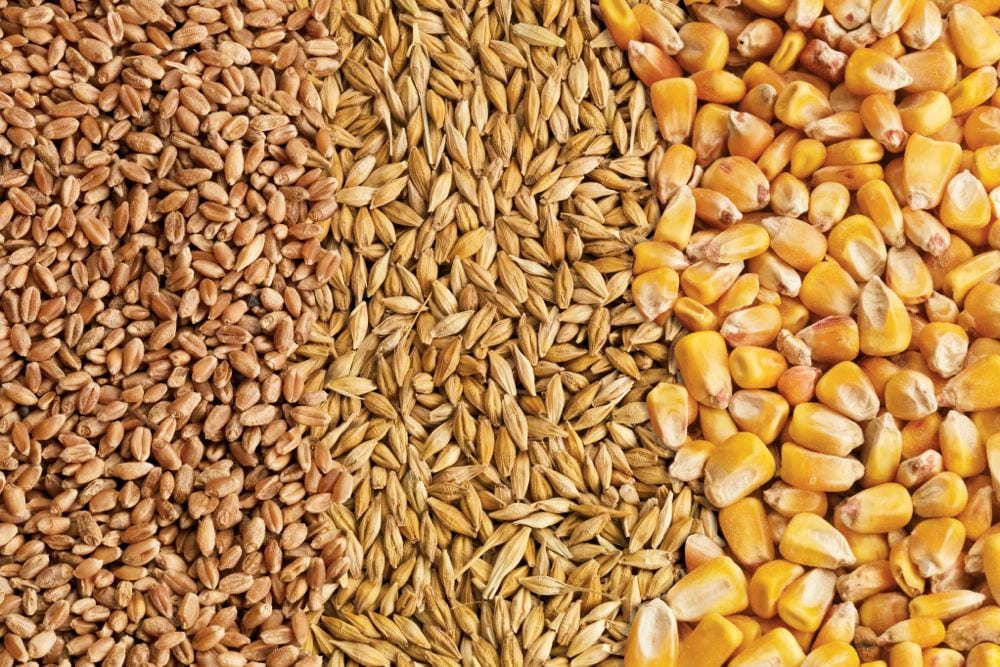U.S. corn and soybean futures fell for a second straight session on Friday on forecasts for optimal crop weather in the Midwest along with softening cash values for corn, traders said.
Wheat futures settled modestly lower, but finished the week up 2.5 per cent, their biggest weekly rise since early May.
At the Chicago Board of Trade (CBOT), July corn fell 11-1/2 cents to $6.61-3/4 per bushel, with new-crop December down 4-1/4 cents at $5.56-1/4 (all figures US$).
July soybeans settled down 4-1/4 cents at $14.93-1/4 per bushel, while new-crop November fell 11-1/2 cents to $12.73-1/2, after hitting a near one-month low at $12.67-3/4.
Read Also

Feed Grains Weekly: Price likely to keep stepping back
As the harvest in southern Alberta presses on, a broker said that is one of the factors pulling feed prices lower in the region. Darcy Haley, vice-president of Ag Value Brokers in Lethbridge, added that lower cattle numbers in feedlots, plentiful amounts of grass for cattle to graze and a lacklustre export market also weighed on feed prices.
July wheat ended down 2-1/2 cents at $6.98.
“Bear-spreading” was a feature in the corn market, with traders selling nearby contracts and buying new-crop months on softening cash corn basis levels in some locations, including Cedar Rapids, Iowa, and Chicago as well as the U.S. Gulf export terminal.
Tight supplies of old-crop corn and soybeans have kept U.S. cash values at, or near, historically high levels.
“We are seeing a weaker basis, but we are still at some of the best levels we have ever seen,” said Karl Setzer, grains analyst at the MaxYield Cooperative in West Bend, Iowa.
Also, CBOT July options expired at the close, and open interest at the $6.60 strike in corn acted as a magnet, drawing prices toward that level.
“The $6.60 in corn was a popular strike price, and the $15 in beans and $7 in wheat. So you kind of had all three of those as targets,” said Ken Smithmier, analyst at the Hightower Report in Chicago.
CBOT soybeans showed the opposite pattern, nearby contracts gaining against new-crop contracts on “bull spreading”.
Back months led the way down on pressure from forecasts for a warmer, drier trend in the Midwest that should bolster crops that were slow to emerge after a wet spring.
“Moisture supplies are more than adequate to support corn and soybean growth,” said Commodity Weather Group meteorologist Joel Widenor.
Following last summer’s historic U.S. drought, traders are on high alert for signs of sustained heat and dryness that could stress crops. A mid-week forecast for more intense heat sent corn and soy futures higher on Wednesday, but subsequent forecasts looked less threatening.
Since Wednesday, as forecasts moderated, the most-active November soybean contract fell 2.8 per cent, its biggest two-day decline since February.
Trade eyes June USDA data
Front-month July soybeans were underpinned as traders adjusted positions ahead of long-awaited data due June 28 from the U.S. Department of Agriculture.
The government is scheduled to release its estimates of U.S. June 1 grain stocks and 2013 planted acreage. Volatile market swings have followed many of the last several quarterly grain stocks reports, especially in corn, and traders may look to exit the markets ahead of the data.
Some traders appeared to be positioning for a low U.S. soybean stocks figure, reflecting scarce old-crop supplies and an active soy crushing pace.
“That could be why we seeing some of the bull-spreading here today,” Setzer said.
The average estimate of U.S. June 1 soybean stocks among analysts surveyed by Reuters was 442 million bushels, compared with 667 million a year earlier. The average corn stocks estimate was 2.845 billion bushels, versus 3.148 billion a year ago.
Wheat falls after strong week
CBOT wheat edged lower after a choppy session as the U.S. winter wheat harvest expanded, but ended the week higher on short-covering and talk of export demand from Asia.
Earlier this week European traders said China bought about 200,000 tonnes of French wheat, and some traders expect more such business to follow as China replenishes reserves.
“China is buying French because they want to expand their supplier footprint,” Smithmier said. “We feel like global prices have made their move to the downside, and China and Southeast Asia will be back for more.”
— Julie Ingwersen reports on ag commodities for Reuters in Chicago. Additional reporting for Reuters by Sam Nelson in Chicago, Nigel Hunt in London and Colin Packham in Sydney.















